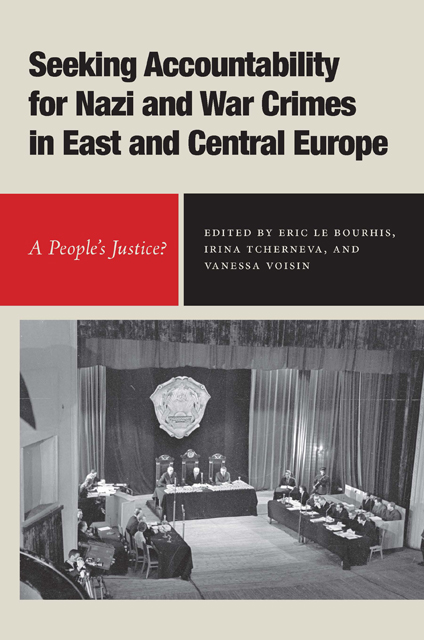8 - Risks and Results of Citizens’ Commitments: The Kačerovski Case in Riga, 1958–1963
Published online by Cambridge University Press: 20 December 2022
Summary
In August 1960, the Supreme Court of Soviet Latvia condemned Soviet engineer Magnus Eduardovič Kačerovski (born 1907) to death, for having participated in mass crimes as the architect-in-chief of a concentration camp near Riga in 1941–43. This harsh verdict was partly due to the mobilization of some of his fellow citizens. With regard to the wartime activity of the defendant, most of the information gathered in the investigative file has been corroborated by the most recent works on the history of the camp. In October 1941, the commander of the Security Service in Nazi-occupied Latvia had requisitioned the company that employed Kačerovski to design and supervise the construction of a concentration camp for civilians near Salaspils. During the time of Kačerovski’s supervision and until the summer of 1944, the number of inmates interned in the camp was, according to most estimates, about two thousand at a time: deported Jews from the Reich, Latvian political and common law prisoners, families rounded up during antipartisan operations, deserters of the Waffen-SS, a few prisoners of war, and Vlasov Army soldiers serving sentences. After 1945, Kačerovski had been cleared by Soviet security services: his war activities were known, but he was not one of those thousands of Soviet citizens who had been secretly tried and condemned for treason. In 1957, being in charge of the renovation of the Lutheran cathedral in Riga, he was recognized and denounced by a former Salaspils inmate. In 1958, the Latvian KGB, in charge of political crimes (including Nazi crimes) committed on Latvian soil, launched an investigation. It was led by a local officer, Capt. Vladimir Izvestny (1929–2012). In March 1959, the KGB arrested Kačerovski. A first open trial at the Supreme Court in Riga (July 23–25, 1959) condemned him for crimes against the state (under the law of December 25, 1958) to ten years of forced labor. He was deported to the Dubravlag (a correctional labor camp for political prisoners in Mordovia). This verdict revealed a harsh interpretation of the renewed legal and investigative frame for trials after 1955, which were supposedly focused on prominent perpetrators. In the autumn of 1959, the case was reported by the press. In reaction to this media coverage, thousands of Soviet citizens engaged in discussions and wrote “outraged” letters to various authorities.
- Type
- Chapter
- Information
- Seeking Accountability for Nazi and War Crimes in East and Central EuropeA People’s Justice?, pp. 283 - 319Publisher: Boydell & BrewerPrint publication year: 2022
- 1
- Cited by

